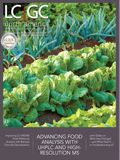34 Years of LC Troubleshooting: An Interview with John Dolan
LCGC North America
Dwight Stoll, who will take the reins of “LC Troubleshooting” next month, spoke with John Dolan to get some insight on the current state of chromatography with John Dolan to get some insight on the current state of chromatography training, future troubleshooting problems, John’s toughest troubleshooting challenge, and the most common chromatographic mistakes.
Dwight Stoll, who will take the reins of "LC Troubleshooting" next month, spoke with John Dolan to get some insight from the 34-year column veteran on the current state of chromatography training, future troubleshooting problems, John's toughest troubleshooting challenge, and the most common chromatographic mistakes.
Dwight Stoll: The chromatography community has changed a lot since you started writing for LCGC in 1984. One current trend we hear a lot about is that there is less and less training for young scientists. What advice do you have for young people who are coming out of school and entering the community, and want to improve their skills as chromatographers?
John W. Dolan

John W. Dolan: Just to reinforce your observation, in the 1990s and early 2000s LC Resources sponsored 4–5 days of open-enrollment liquid chromatography (LC) training classes in New Jersey twice a year. With the interest in training from the local pharma companies, these classes were almost always filled to the limit of 30 students, often with waiting lists. But we stopped teaching open-enrollment classes a few years ago because we could no longer get enough sign-ups to cover our teaching expenses. There still are live training opportunities available at many scientific and professional meetings, so if you attend such meetings it often is worthwhile to attend one of these training sessions. Live training allows vital interaction with the presenter that is not possible with online resources or texts.
So, although live training opportunities may be less available today and many companies have decreased their emphasis on professional training of their staff, opportunities still exist. Fortunately, many of these are free via the internet and are available 24/7 to provide instant help.
Stoll: In your final column (see "All's Well That Ends Well") you reflected on the past, which I found very interesting. It astonishes me just how much progress we've made and how the field continues to evolve. But what about the future? What troubleshooting topics do you think will still be with us in 10 years? On the other hand, which common troubleshooting problems of today do you think will be resolved soon?
Dolan: In my "LC Troubleshooting" columns on my 10th, 20th, and 30th anniversaries, I wrote on themes of looking back and looking forward. One thing I saw consistently was that I am terrible at predicting the future. I missed the prediction of products that have made a huge impact on how we do liquid chromatography: superficially porous particles, in-line degassers, ultrahigh-pressure liquid chromatography (UHPLC), hydrophilic interaction chromatography (HILIC), and so forth. As a result, I don't have much confidence in predicting future events.
However, I think the biggest future challenges will continue to be those related to the separation: retention stability, changes in resolution, peak shape, and column problems created by the samples. I believe that many of the column-related problems we experience today would be solved or sufficiently mitigated if we realized that the column should be treated as a consumable device, with a low per-sample cost, instead of a capital expenditure that needs to be put on life support until we can't nurse another sample through it. A large portion of the problems that I help solve via email would go away if this time- and cost-saving strategy were adopted.
Stoll: What is the toughest troubleshooting problem you've solved?
Dolan: It is hard to take credit for solving lots of problems, but I like to think that my advice helps other people solve their problems. One of the most challenging ones was chronicled in a column titled "The Bermuda Triangle," (5) based on a quote from the reader's initial cry for help, "If you are looking for something to write articles on, you should do one on knowing when it is time to throw in the towel and blame the problem on the Bermuda Triangle; I am now convinced that [my laboratory] is located at its dead center." The reader had problems with two instruments running two very different methods, both of which exhibited frequent sinusoidal baselines. He worked with the instrument manufacturer to replace many parts of the instruments with no luck. However, when he moved the instruments to another lab across the hall, they never failed. In the hallway between the two labs, the noise problem was intermediate. We thought the problem might be related to the electrical supply, so he ran extension cords from the original lab to power the moved instruments, but they still worked fine. The article lists 24 separate experiments to isolate the problem, none of which completely solved the problem. Finally, during a spelunking expedition, he pushed up the ceiling tiles to see if there was a gremlin hiding in there and discovered an electronic HEPA filter above where the instruments normally resided. Although not conclusive, it appeared that electromagnetic radiation from this unit was the problem source. I don't see it in the article, but I recall that I later heard that when the HEPA system was shut down for maintenance, the problem stopped. This article is a great read on systematic isolation of a problem. You can find it in the archives at www.chromatographyonline.com or in the compilation of all my troubleshooting articles at www.lcresources.com/tsbible.
Stoll: What are the three most common chromatographic mistakes you've seen people making in recent years?
Dolan: The first was alluded to earlier-trying to stretch the lifetime of a column beyond reasonable limits. I have said many times that after 500 injections, the column doesn't owe me anything. At this point the cost of the column typically is less than 2% of the total analysis cost, so life-extension procedures don't make much sense economically.
The second is trying to speed up the method by running conditions that cause the first peak to come out too close to the column dead time. I often refer to a statement by my good friend, the late Jack Kirkland. Many years ago I heard Jack say that if every problem chromatogram were adjusted so that the first peak was eluted with a retention factor of at least 1, half the problems would go away. Although this statement is a bit of an oversimplification, there is a lot of truth in it. A large percentage of the problems I see suffer from just this situation. If the peak is too close to the dead time (solvent front), retention and peak areas vary more, there is potential for interference from unretained materials, resolution is unstable, and method performance suffers.
The third is poor application of the scientific method during troubleshooting. It seems that we apply the scientific method in many places in the laboratory, but tend to forget it when a chromatographic problem applies. This is summarized in my oft-stated "Rule of One"-change just one thing at a time. Most problems can be quickly isolated if we perform mental experiments by examining changes that took place before the failure occurred and then make single-variable changes during the problem-isolation process. A change of column, precolumn, and mobile phase often will solve a new chromatographic problem. However, the change of all of these variables at once gives us little information on the true problem source, so we are unlikely to be able to put specific practices into place that will prevent future occurrences of the same problem. Change one thing at a time. If you do that, it may take longer to isolate the problem, but you will know more about how to prevent it in the future.
Stoll: Have you ever gotten stumped, or nearly stumped, by a question?
Dolan: Regularly! But many times this is a result of insufficient information. After probing for method details and a pair of before-and-after chromatograms, problems become much less daunting. I find that most problems arise from poor instrument maintenance or a method that doesn't adhere to good application of basic chromatographic principles. Circling back to the first question, the more understanding you can gain about how the chromatographic process works, the more likely you are to see the failure points in LC methods. My strong belief in this principle is reflected in the many "LC Troubleshooting" columns I've written focused on helping readers understand how chromatography works, so they can better understand the root cause when it doesn't work.
References
(1) ChromAcademy, http://www.chromacademy.com/.
(2) Analytical Training Solutions, https://www.analyticaltrainingsolutions.com/.
(3) Chromatography Forum, www.chromforum.org.
(4) International HPLC Users Group on LinkedIn, https://www.linkedin.com/groups/1859514.
(5) J.W. Dolan, LCGC North Am. 23(4), 370–375 (2005).
Dwight Stoll

Dwight Stoll, Dwight Stoll is the incoming editor for "LC Troubleshooting," effective November 2017. Stoll is an associate professor and co-chair of chemistry at Gustavus Adolphus College in St. Peter, Minnesota. His primary research focus is on the development of 2D-LC for both targeted and untargeted analyses. He has authored or coauthored 48 peer-reviewed publications and three book chapters in separation science and more than 95 conference presentations. He is also a member of LCGC's editorial advisory board. Direct correspondence about this interview via e-mail to LCGCedit@ubm.com

Polysorbate Quantification and Degradation Analysis via LC and Charged Aerosol Detection
April 9th 2025Scientists from ThermoFisher Scientific published a review article in the Journal of Chromatography A that provided an overview of HPLC analysis using charged aerosol detection can help with polysorbate quantification.
Removing Double-Stranded RNA Impurities Using Chromatography
April 8th 2025Researchers from Agency for Science, Technology and Research in Singapore recently published a review article exploring how chromatography can be used to remove double-stranded RNA impurities during mRNA therapeutics production.












